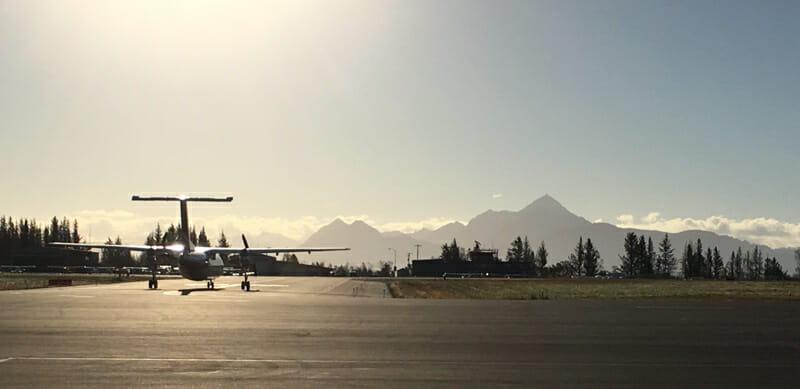
Ravn Alaska provides an excellent career destination for any interested pilot. Although Alaska is a bit different than the rest of the United States, most new recruits finish their regional airline career with us by either retiring or joining up with the Majors. Ravn Alaska pilots enjoy operating in a professional but challenging flying environment, with opportunities to fly a variety of equipment and pilot bases under 135 as well as the opportunity to sign up with our elite Anchorage Based Dash 8 100 fleet providing safe, efficient airline service to the great people of Alaska.
We are proud to offer scheduled service to more than 100 communities statewide. Our team of professionals on the ground and in the air has the history and experience to offer the highest level of customer satisfaction today — and for the future.
We offer service for passenger groups and odd-sized cargo up to 6,000 pounds, and have charter authority for anywhere in our great state, Canada and the 48 contiguous states.
The Ravn Air Group is made up of 3 operating certificates: Corvus Airlines (known as Ravn Alaska) operates under FAR Part 121. Hageland Aviation & Frontier Flying Service (operating as Ravn Connect) utilize FAR Part 135 rules, providing two consecutive weeks off for their pilot staff every month.
These three certificates share a master pilot seniority list. Ravn Alaska engages in Part 121 scheduled domestic operations as well as unique supplemental (charter) operations.
Combined, our companies have been flying here for about as long as Alaska has been a state. In fact, our operations and experience have grown right alongside the Last Frontier.
Corvus Airlines
Corvus Airlines, formerly Era Aviation, began operations in 1948 as Carl Brady flew the first commercial helicopter to Alaska to work on a mapping contract for the U.S. government.
Corvus Airlines flies schedules throughout the state of Alaska to over 100 destinations and employs 74 active line pilots that are all Anchorage based and home every night.
Hageland Aviation Services
At the end of the 20th century, Hageland continued to add planes to its fleet, including its first Cessna Caravan II. The company maintained safety as a priority by becoming an active member in the Alaska Aviation Safety Foundation and the Alaska Air Carrier Association in 2000.
As in earlier years, the company continued its steady growth through the first decade of the new century, adding the Beech 1900C to its stable and relocating its headquarters at Anchorage International Airport.
Today, Hageland operates over 50 aircraft ranging from Cessna 207s to BE1900Cs, under the brand Ravn Connect.
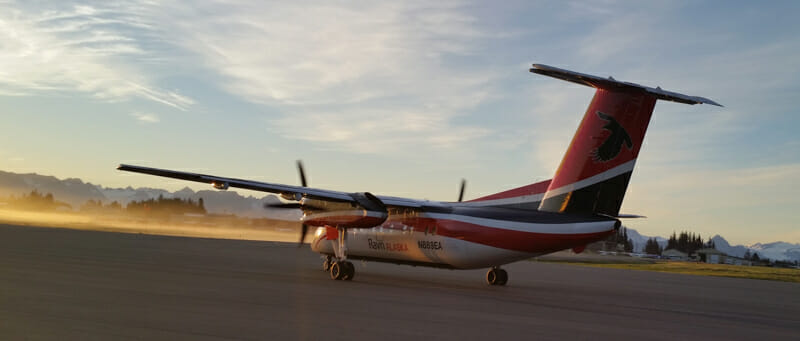
Frontier Flying Service
Frontier operates under the brand Ravn Connect. Frontier does not operate any Ravn flight numbers as it operates cargo only and “on demand charters.”
The Ravn Air Group, formerly known as Era Alaska, is the largest Alaska-based airline with nearly 70 aircraft serving about 100 Alaska communities daily.
Ravn Alaska offers challenging and beautiful flying throughout Alaska to gravel runways, ice strips, and more. We are a Part 121 air carrier, focused on safety and operating since 1948.
Better Lifestyle
Corvus
- Home-every-night schedules
- Online scheduling for easy shift trading
- Preferential bidding to optimize and personalize your monthly flight schedule
- Bid AM, PM, or Reserve lines to fit your lifestyle
- Advanced multi-engine turbine fleet
- iPad-based electronic flight bags issued to each pilot
- Minimum 10 days off per month, most Dash 8 pilots receive 12
- Pre-approved vacation locked 6 to 12 months in advance
- Pick up extra shifts for time and a half
- Supplemental vacation time awarded in reverse seniority the month prior
Ravn Connect
- 2 weeks on, 2 weeks off
- Company housing provided
- Build your time and experience for Part 121
- Paid time off (PTO)
Excellent Benefits
- Best pay rates in the regional industry
- Full medical benefits: health, vision, dental, and life
- Pass benefits for your dependents on major, regional, and foreign airlines
- CASS Jumpseat carrier
- Company 401K contribution of 2%
- Paid vacation up to 20 days for employees with 3 years of service
- Option to transfer to other carriers
Training Pay
Corvus
- Corvus Training pay is F/O rate ($50/hr) at 75 hours guaranteed, starting on the first day of class
- Simulator training includes company provided single occupancy hotel room
- Relocation Compensation
Corvus
- Relocation reimbursement of $1,500 upon completion of training
Ravn Alaska offers one of the most competitive compensation packages in the regional airline market, and we are constantly improving it. Our goal is to provide you with an attractive career path and a great lifestyle, allowing you to be home at night while enjoying one of the industry’s top pay scales.
Corvus Benefits Package
The Corvus benefit package includes health, dental and vision, life insurance, 401K with company contribution, pass benefits and jumpseat benefits with almost every major and regional carrier in the United States.
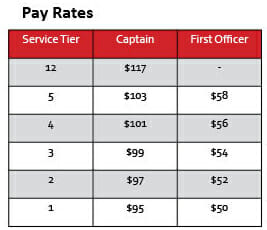
Additional Notes
- Monthly guarantee is 75 hours
- Service tier is number of years in seat position
- Pilot candidates in training are paid tier 1 F/O monthly guarantee (i.e. $50/hr at 75 hours per month)
- Pilots on seniority list in 2017 can receive up to $15,000 in retention bonuses through February 2018.
Ravn Connect Benefits Package
C-208SIC: $205 per day.
BE-1900 SIC: $205 per day.
PIC Pay: Daily rate plus bonus hours. Bonus hourly pay is based on a 5 hour a day average. Any block hours over an average of 5 hours per day, over the course of a calendar month, will be paid at the applicable hourly bonus rate.
Yearly Raises: Raises are based on the date you pass the initial check ride in the aircraft being flown.
C-207 Pay: Bonus pay is $60/hour
- 1st year – $290
- 10th year – $380
C-208 Pay: Bonus pay is $70/hour
- 1st year – $330
- 10th year – $440
- 15th year – $490
PA31 Pay: Bonus pay is $80/hour, daily rate calculated to be $20/higher than the C208’s current pay scale for upgrades.
- 1st year – $360
- 10th year – $470
- 15th year – $520
BE1900 Pay: Bonus pay is $90 per hour
- 1st year – $420
- 10th year -$510
- 15th year – $560

Per Diem:
$40/day for overnight trips spent away from the assigned base. If pilots elect to work extra days away from their normally assigned base; these days will not be paid per diem.
Pilot Housing Allowance:
$25 a day for all pilots. Anchorage and Fairbanks PI C’s are excluded from this.
Pilot Rent:
If you choose to reside in company housing while on shift you will be charged $225 a month, this is deducted from your pay check.
Ground School Pay:
All pilots will get their daily rate for each day of ground school. Computer based training modules are expected to be completed during normal work hours and are thus not paid extra.
Stand by Charter Pay:
For charters that require scheduled stand by time greater than 1 hour, a minimum guarantee of four hours will be allotted to that flight day, regardless of actual block time. If the total block time for the day is greater than four hours, no additional time will be allotted. Standby charters that qualify for this compensation will be noted in the remarks of the Monthly Summary.

Sick Leave:
Two days of sick leave per year, beginning after the first 6 months of employment, are provided to crewmembers to use without reduction to pay or deduction to PTO. Sick leave can be accumulated to a maximum of 4 sick days. Sick leave cannot be cashed out upon termination of employment, nor can it be combined with the PTO payout policy.
Paid Time Off (PTO)
- PTO will be accrued by each crewmember that is a full time employee.
- PTO accrual will begin at the crewmember’s date of hire but will not be eligible for use until 6 months from date of hire.

Using Paid Time Off:
- PTO may only be used in full day increments.
- Family Medical Leave Act: Under FMLA, PTO must be used from day one of FMLA until PTO is exhausted.
- Approved Extra Bereavement Leave: For these events PTO use is available when a crew member falls below 15 days of work in a calendar month.
- Pre-Approved Vacation: Crew members that elect to take pre-approved vacation will be responsible for finding a replacement pilot for their normally assigned work shift. A request will be sent to the Chief Pilot or Assistant Chief Pilot for approval following the normal procedures for schedule changes.
- Once per calendar year, each crew member can elect to “cash out” the entirety of the accrued PTO days.

Ravn Route Map
Our flights legs can be as short as 20 minutes or as long as 3 hours, and our operations take us to challenging airports like Valdez and Kodiak as well as ice strips on the North Slope. Ravn Alaska also provides code share service for Alaska Airlines.
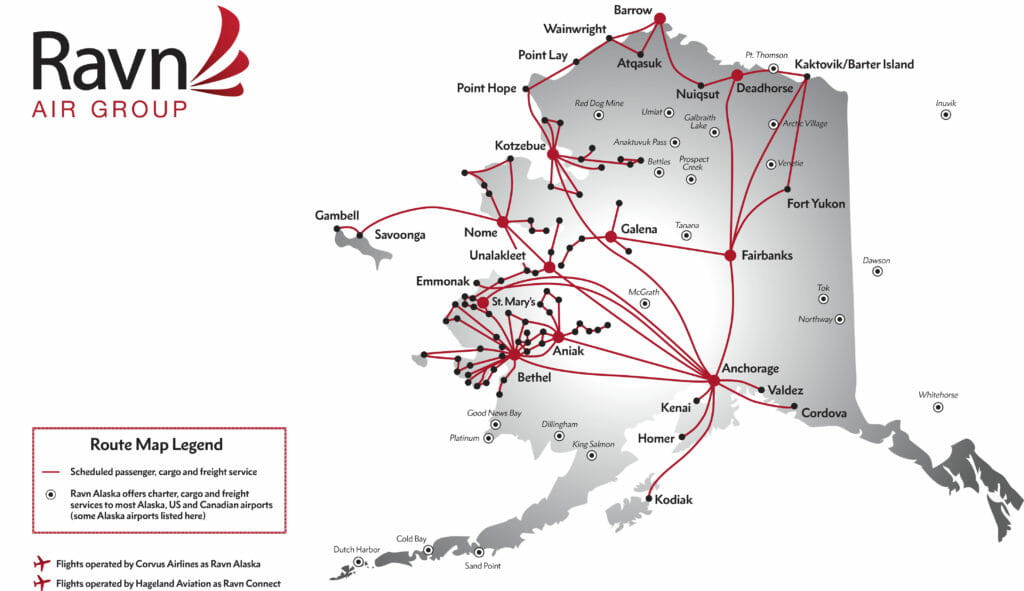
Aircraft Fleet
Corvus
Corvus consists of De Havilland Dash 8-100 aircraft with a current fleet size of 10, serving 13 regular destinations and over 30 charter destinations. Ravn Connect consists of 59 aircraft spread across it’s 10 stations.
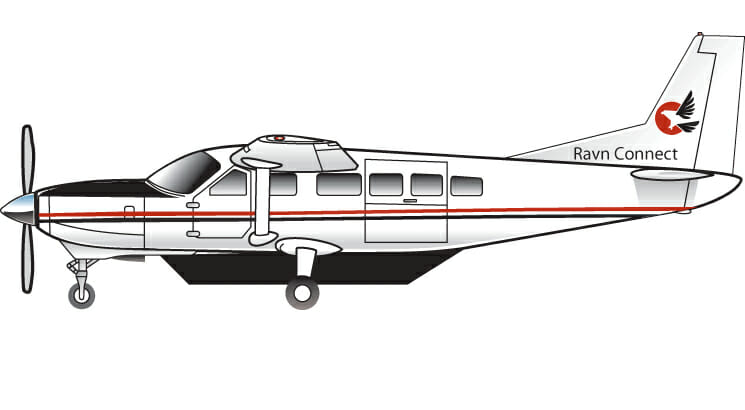


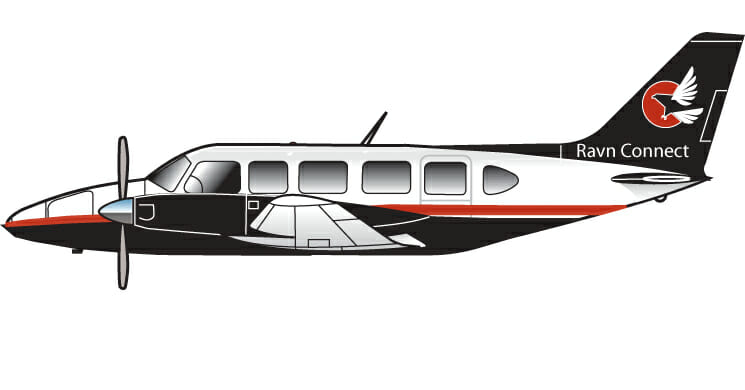

Interview with Aaron Rocereta, Chief Pilot Ravn Air Group
Pre Interview:
Craig: How do you select applicants to be brought in for an interview?
Aaron: We get our applicants from a variety of places to crew the Dash 8. First we transfer pilots from the 135 side when they are ready to move to 121. This is our primary pipeline. Secondly, we take pilot referrals. If you know a Ravn pilot, get in touch with them and have them recommend you. Third, we take applicants from out online application portal at www.flyravn.com/for-pilots/.
We need ATP minimums on the 121 side. We know people familiar with Alaska will enjoy working for us more, but this isn’t a game stopper. We look for either IFR CFI time, or commercial- two pilot crew experience. Pilots need more than just VFR time to be successful in the Dash.
On the 135 side, we are able to take pilots with just a commercial pilot’s license. Because the minimums are lower, we have a lot of interest, so we are looking for hardworking individuals that can be great team players and have a want to be in Alaska. Pilots with 500 hours may proceed directly into a Cessna 207.
C: Can you explain the point system associated with online application process and what types of things count for points?
A: The purpose of the online system is open the communication portal. We recommend you upload your resume and cover letter and total time. We usually scan through these items first to find eligible candidates and call them first. If you don’t fill those items out, you will be the lowest priority for callback.
C: What can an applicant do to increase their chances of being called for an interview?
A: We are always looking for professionals that are dedicated to Safety, Hard Work, Customer Oriented and Ravn Spirit. If you have these, you can reiterate this in your cover letter.
C: How critical is it to attend a job fair to get an interview?
A: Not critical. Your time and our time is better spent meeting with you in the office and getting you into your career.
C: What is the best way to prepare for an interview with your company?
A: Our Company relies on safe, professional pilots that do not hesitate to say NO when risk for the flight becomes too high. Applicants must know what is required to be in compliance with the regulations as well as the human factors techniques and assertiveness to say no and provide other alternatives when risk is too high.
Interview:
C: Do you recommend that applicants get to your headquarters city the day before and get a hotel room for the night?
A: In person is always a plus, but we are able to perform the interview over the phone or via skype. Once in town, a simulator evaluation will be necessary to continue training.
C: Can you walk me through a typical day of interviews?
A: On the 135 side, most interviews last 30 minutes. The interview team will ensure the applicant is eligible, start with some “tell us about yourself” questions, and then move into regulations and test the applicants ability to be assertive for safety. The interview ends with questions from the applicant.
For 121 interviews, we complete an over the phone interview to ensure applicant is qualified and discuss general Ravn pilot lifestyle questions. The formal interview takes place at ANC headquarters with a 3 pilot panel for 60 minutes which asks general questions, decision making and assertiveness questions, and 5 technical questions regarding IFR dispatch rules, IFR takeoff rules, and IFR landing rules. The interview ends with the Panel answering questions for the applicant about the company.
Successful interviewees will proceed to a 1 hour simulator evaluation. We routinely run applicants through the PAHO LOC DME (BACK CRS) RWY 22 approach because it tests DME arc skills, RMI skills, HSI backcourse skills and missed approach with holding. We are seeing these skills deteriorating in applicants as more and more flight schools are using higher end synthetic vision trainers. In Alaska, we have these capabilities, but still rely on legacy navigation such as LDA’s and DME arc Backcourses. We still have one NDB approach within our system.
C: What kind of questions can an applicant expect to be asked?
A: Any part 61 IFR rule for planning or executing a flight: when is an alternate required, what are the required fuel reserves, what is the minimum visibility required to takeoff when it fogs in, is an attitude indicator required for VFR flight?
C: Can you give me some examples of the TMAAT questions that you like to ask?
A: TMAAT you made a good decision; TMAAT you had a disagreement with a supervisor; TMAAT you made a bad decision; TMAAT you were scared in an airplane and what did you do?
C: If the TMAAT question being asked does not apply to that applicant can that question be skipped?
A: The panel will rephrase the question. We are really trying to see that a person has the skills to learn from their mistakes to do better the next day. We are also trying to see if the person has the skills to professionally disagree with a fellow employee/supervisor/customer and can still produce a safe outcome. We expect to teach a lot of these skills to new applicants, but we can only teach them if their attitude accepts correction and understands what is right.
C: What are some of the biggest mistakes that applicants make during the interview process?
A: They come unprepared. A lot of people think that a 135 SIC position does not require preparation, but it does. We are highering the Captains of tomorrow and we are looking for this in our applicants for all aircraft types. Study your regs as if you have a checkride tomorrow, do some interview prep with an interview prep outfit, your classmates, or even with someone in your family. Study up on the company and convince the interview board that you have already decided that Ravn Alaska is right for you.
Written test:
C: Is there a written or computer test?
A: Nope.
C: Is there a personality test?
A: Nope. We will assess your ability to work well with others, professional disagree, and maintain assertiveness for safety in the interview.
C: What recommendations do you have for applicants to prepare themselves for the personality test?
A: You must know that safety is not negotiable, you must be able to remain confident that safety cannot be compromised, and you must be able to offer alternate solutions for unsatisfactory conditions: hold, turn around, go missed, delay the flight…
C: What results are you looking for in order for an applicant to pass the personality test?
A: People who know only their way and have never learned from a mistake do not progress in the interview.
Simulator Evaluation:
C: Do you have a simulator ride?
A: Yes for the 121 Dash 8 applicants
C: What type of aircraft is used for the simulator evaluation?
A: King Air 350 (At the Medallion Flight Safety Simulator Center in Anchorage)
C: What types of scenarios should an applicant expect in the simulator evaluation?
A: PAHO LOC DME BC RWY 21. We also do the PADQ ILS RWY 26 with the DME ARC, and every once and a while we will do the PANI NDB DME 29
C: What are you looking for in the simulator evaluation?
A: General VOR orientation, the ability to improve over the 1 hour session, the ability to communicate “loss of situational awareness”, the ability to pilot the aircraft to minimums, the ability to go missed and hold, the ability to self-critique on the post flight.
C: What are some of the biggest mistakes applicants make?
A: The biggest mistake we see is pilots that don’t prepare. Any pilot coming to any interview should be ready for an IFR checkride. The same is true for any of our pilots that are about to accept a flight for the day. When pilots start losing situational awareness, the need to remember to slow down to a speed they can think at: 130 knots, they need to call out, “I’m getting behind” or “I’m losing situational awareness” and work to get it back. It’s okay to enter a hold to get things step up, you just have to ask for it. Lastly, we see a lot of applicants mismanage their power, if you keep the throttle at a cruise setting and start the approach, things start happening really fast. Plan our your descent, plan your power, stay a head of the aircraft, reach out to the pilot monitoring when you begin to feel behind.
Post Interview:
C: Do you tell applicants they are hired in person that day?
A: Sometimes, depending on how full the class is. Sometimes we need a week to determine which class to put the pilots in.
C: If not, how long do applicants have to wait to know if they are hired?
A: One week.
C: How soon can an applicant expect a class date after being hired?
A: We only hire for specific class dates. The dates are posted on our hiring website.
General:
C: How many pilots does your airline expect to hire this year?
A: 24 for the Dash 8; 35 for the 135
C: Does Ravn offer an ATP-CQP class?
A: Our ATP- CTP is still in review with the FAA. Right now we are reimbursing successful applicants $5000 at the completion of IOE ($2500 after IOE, $2500 after 6 months). These policies can change with each hiring class, so make sure you discuss this in the interview.
C: Do you have a hiring bonus? Is there any specific criterion to qualify for the bonus?
A: Yes. All Ravn Alaska pilots are receiving a $15,000 bonus in 2017 if they remain employed on a trimester basis throughout the year.
C: Does Ravn have a pilot referral program?
A: Yes. If you refer a successful applicant you will received $2500 once they complete IOE/ 135 safety pilot program, and you will receive another $2500 if the pilot you refer stays employed by Ravn for 12 months.
C: Can you describe the career path progression at Ravn?
A: About half of our pilots have set up Ravn Alaska as their final career destination. For pilots that want to move on to Major Airlines, 18% of our Captain staff will turn over to majors each year. This number is increasing. We find that the relationships you build at Ravn will help you coordinate with employment opportunities at any airline you wish to move on to.
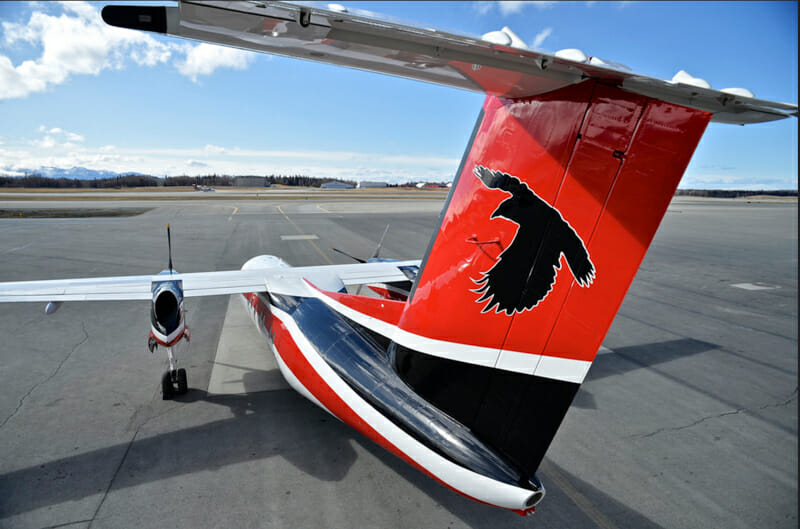
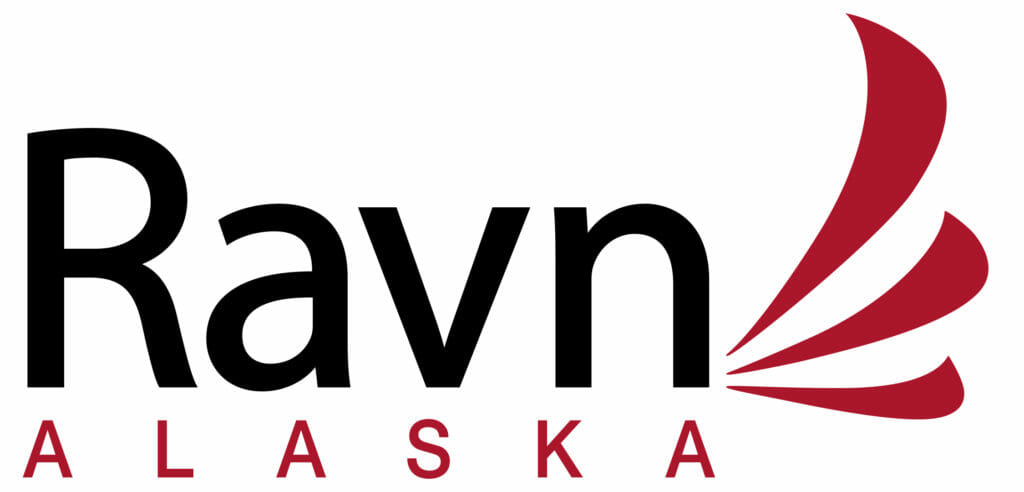
Fast Facts:
Headquarters: Anchorage Alaska
Year Founded: 1948
Number of employees: 950
Number of Aircraft: 69
Number of Pilots: 215
Most junior Captain hired: Dash 8 May 2012; Caravan March 2017
Number of Passengers (yearly): Part 121- 401,918
Number of Bases: Dash 8: 1- ANC; Part 135- 10
Bases: PANC, PANI, PAFA, PABE, PAUN, PABR, PAOM, PASM, PFKW, PAOT
Key Benefits: 121- at home every night schedule; 135- 2 weeks on 2 weeks off
Website – www.flyravn.com/for-pilots/
Phone – (907) 266-8401
Facebook – www.facebook.com/RavnAlaska/
Ravn Alaska
4700 Old International Airport Road
Anchorage, AK 99502
2017 Bonus Program:
- $15,000 bonus for all pilots employed in 2017
- $5,000 referral bonus to refer your fellow pilots once you get online with us (some exceptions apply- must be Dash 8 eligible or 135 PIC eligible, both pilots must remain employed as pilots for 12 months with the Air Group)
Credits:
Aaron Rocereta, Chief Pilot, Valdez, Alaska

Erin Witt, Chief Pilot, Hageland Aviation / Ravn Connect













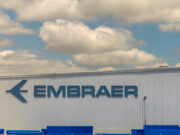
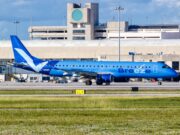


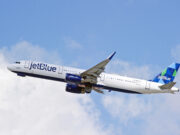






















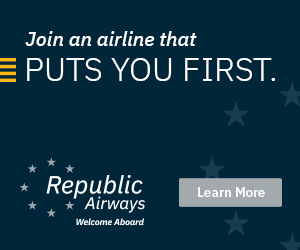




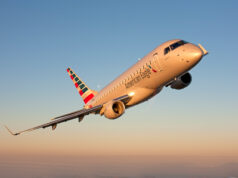
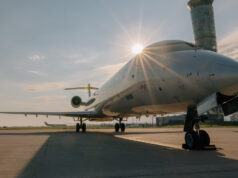


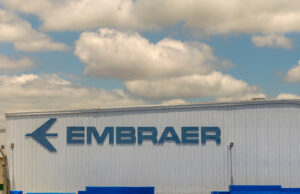




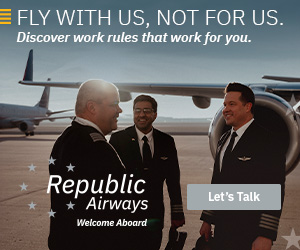

[…] 12. Ravn Alaska – Aero Crew News […]